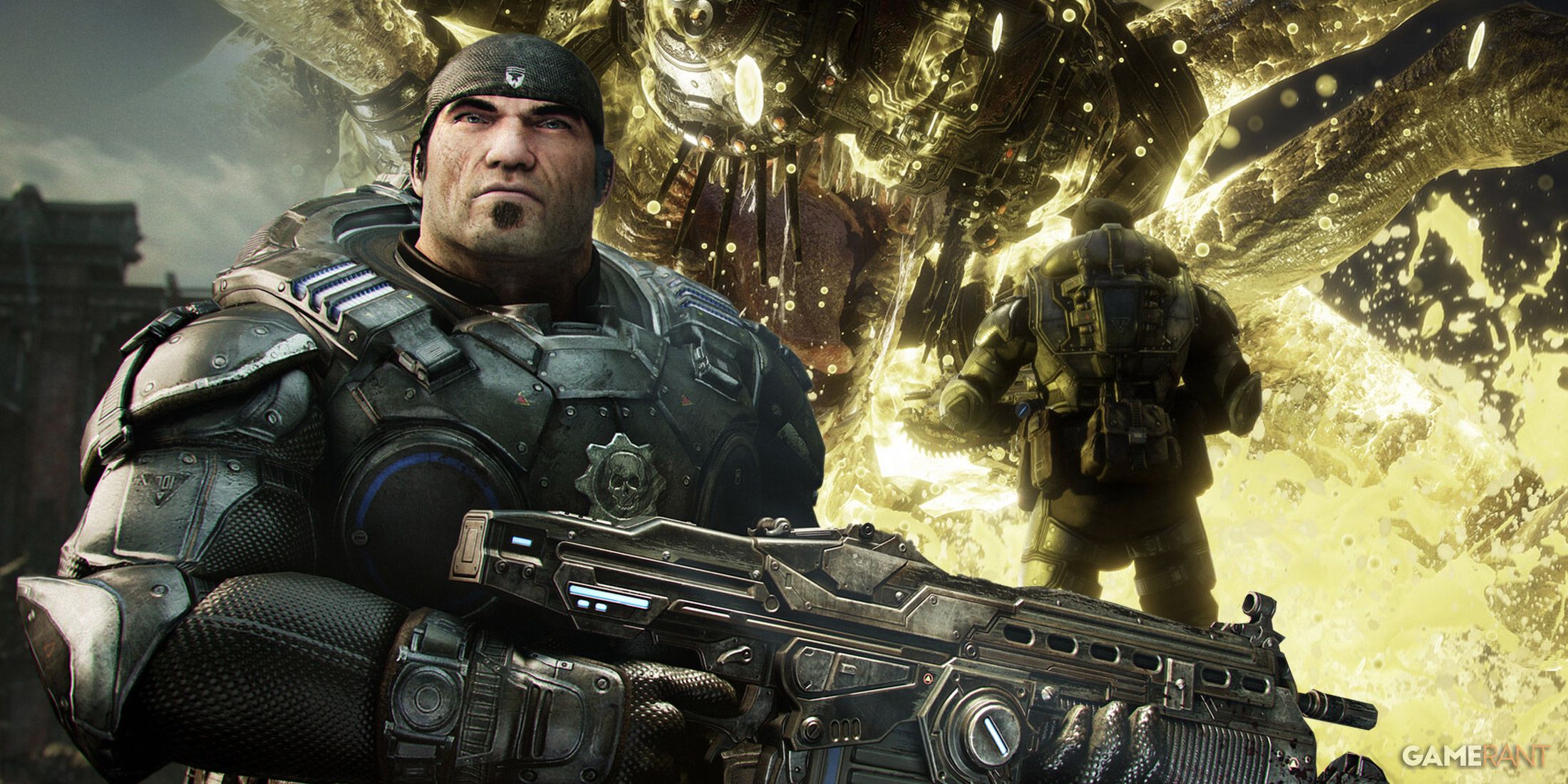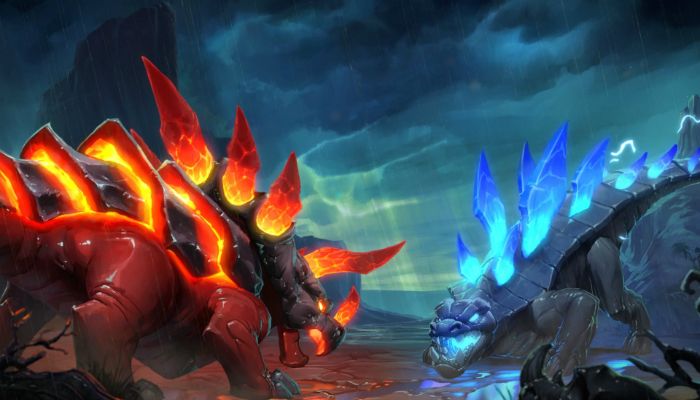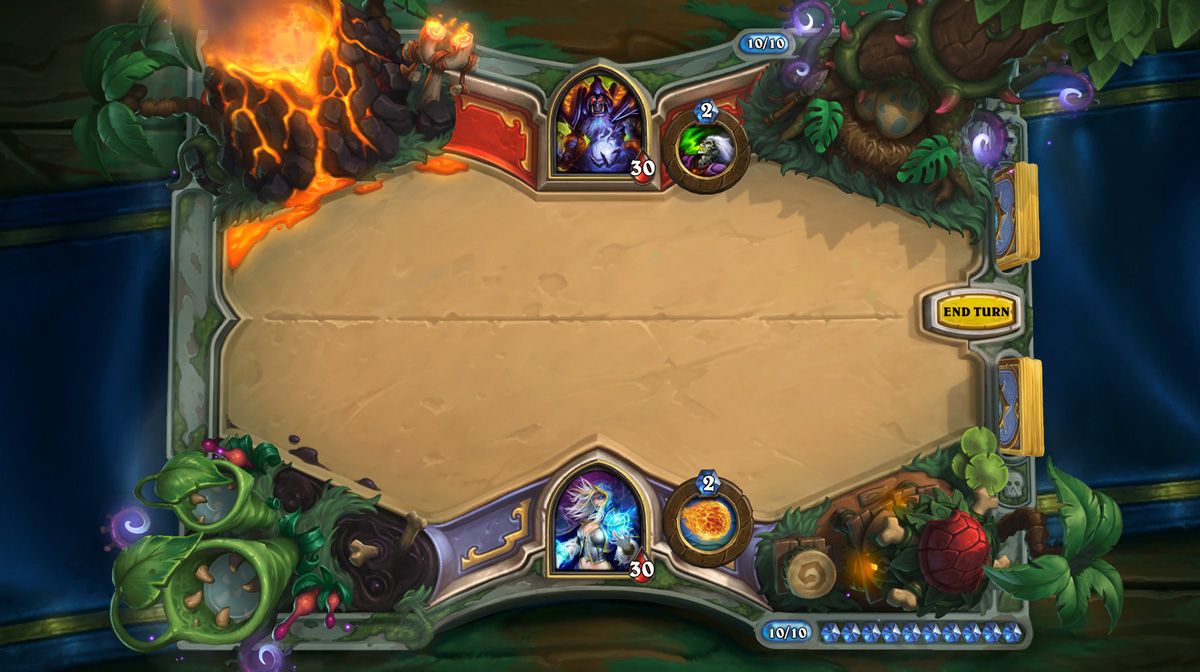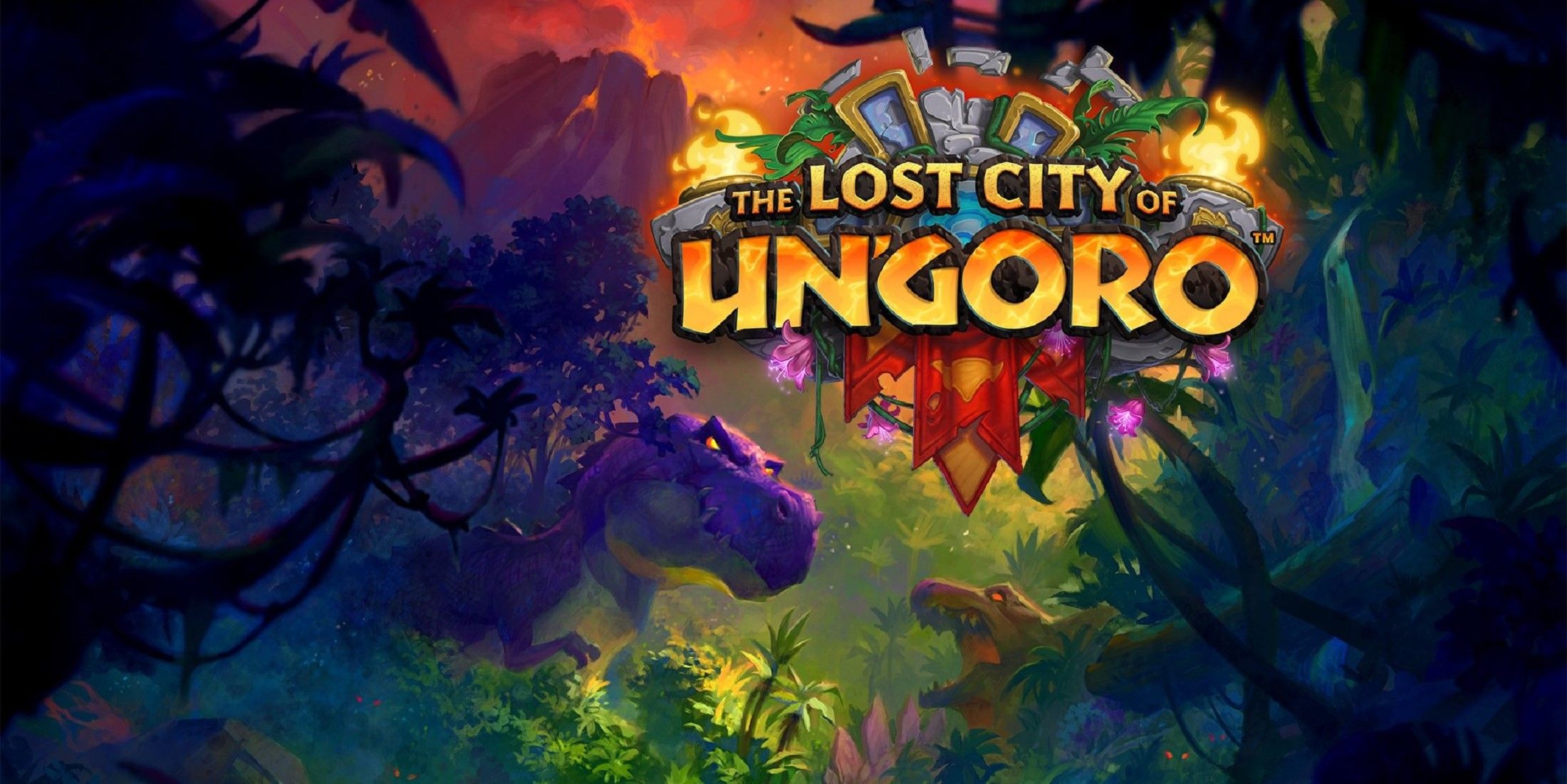
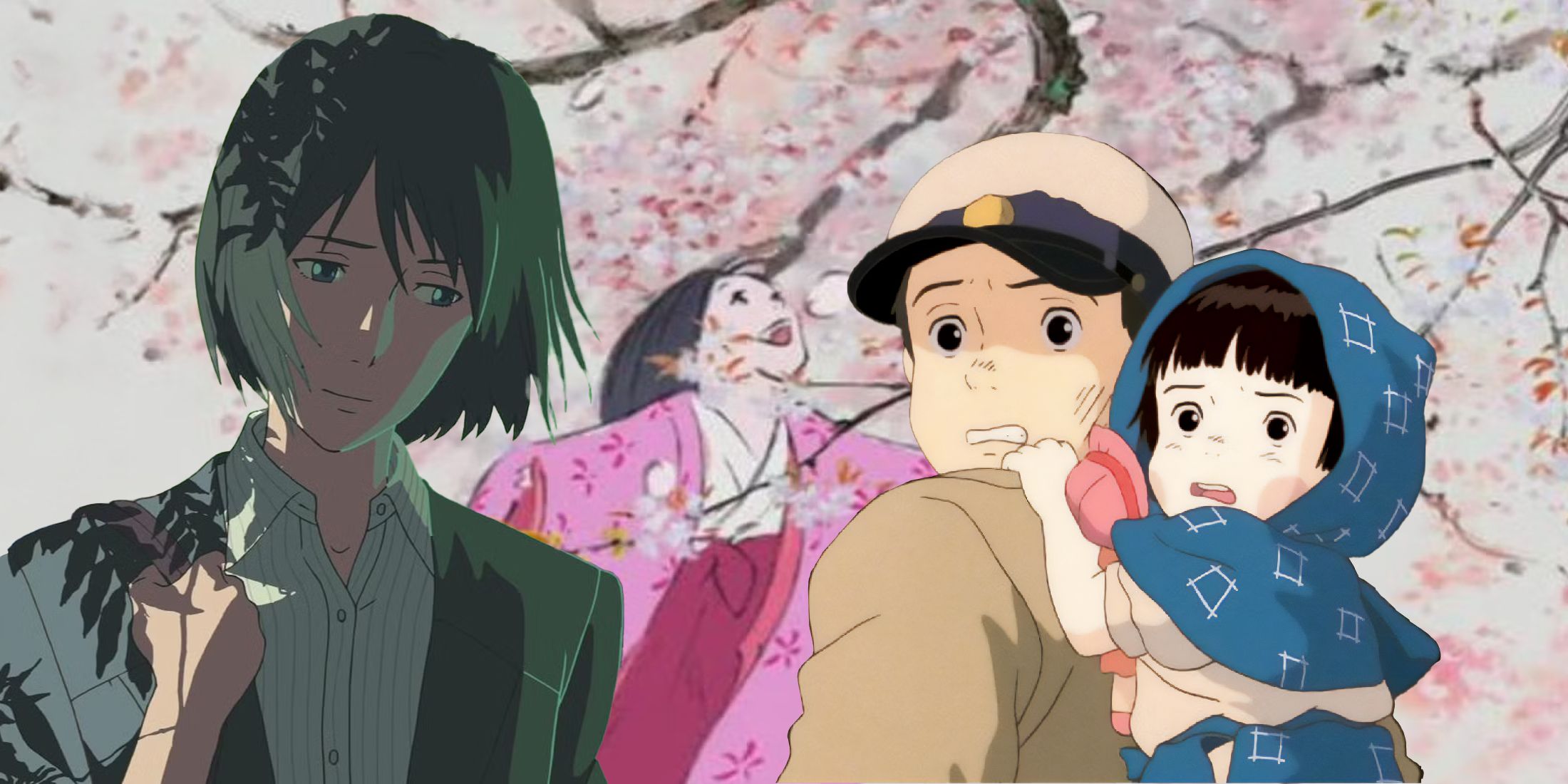
Hearthstone first introduced the Un’Goro Crater, home to dinosaurs, elementals, and Tortollans, in 2017 during the Journey to Un’Goro expansion. Now, Hearthstone players can return to the fan-favorite location in The Lost City of Un’Goro, a brand-new Tortollan-focused story featuring new Quests, a new keyword, and, of course, new dinosaurs.
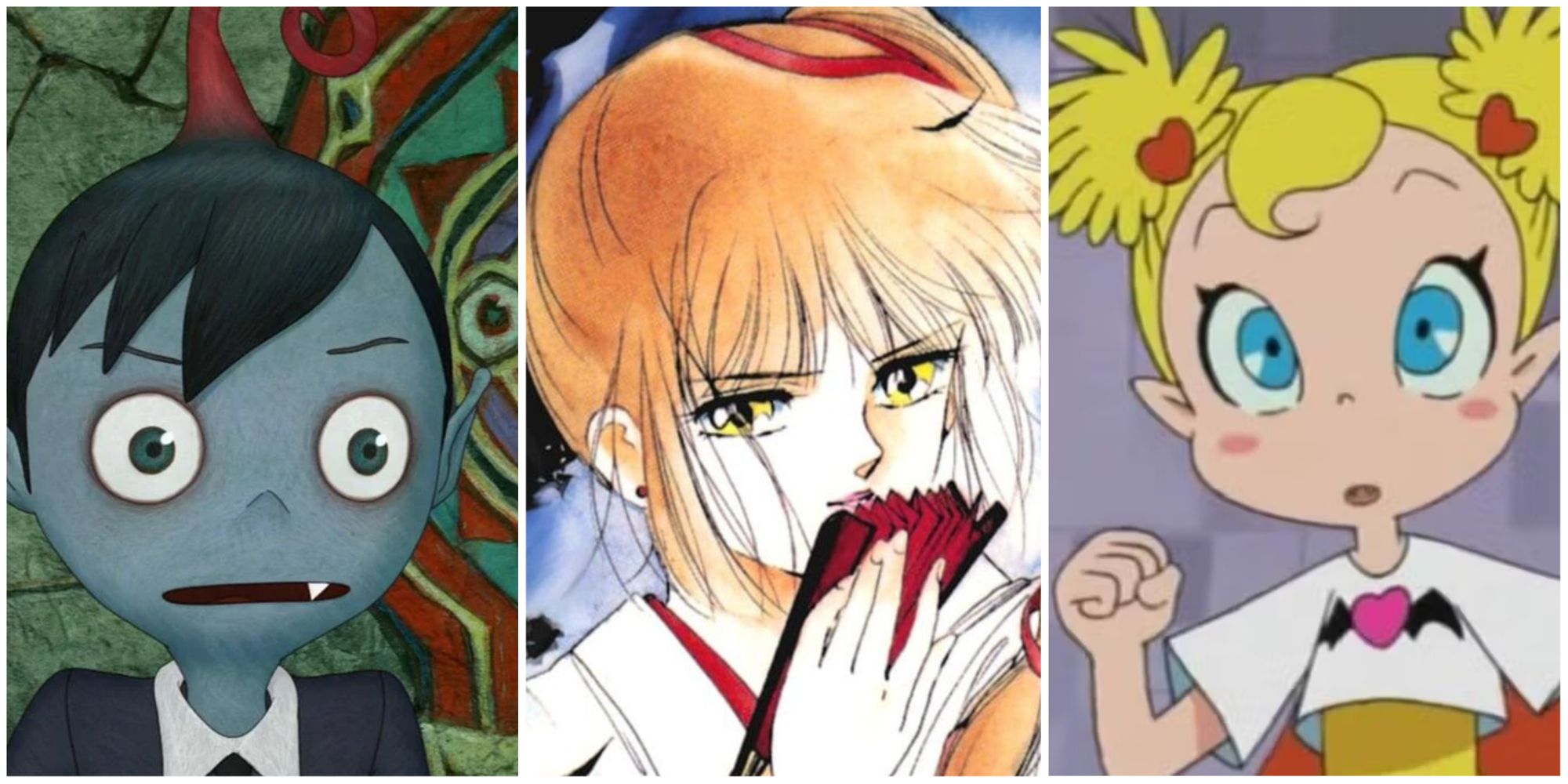
Game Rant spoke to Hearthstone Senior Game Designer Cora Georgiou and Lead Designer Edward Goodwin about the development process behind The Lost City of Un’Goro. They discussed the decision to return to the Un’Goro Crater, what it was like to build new Legendary Quests for each Hearthstone class, and their favorite cards—and dinosaurs—in the upcoming expansion. Naturally, the team is excited for Hearthstone and World of Warcraft fans to learn more about the mysteries of the Un’Goro Crater. This transcript has been edited for clarity and brevity.
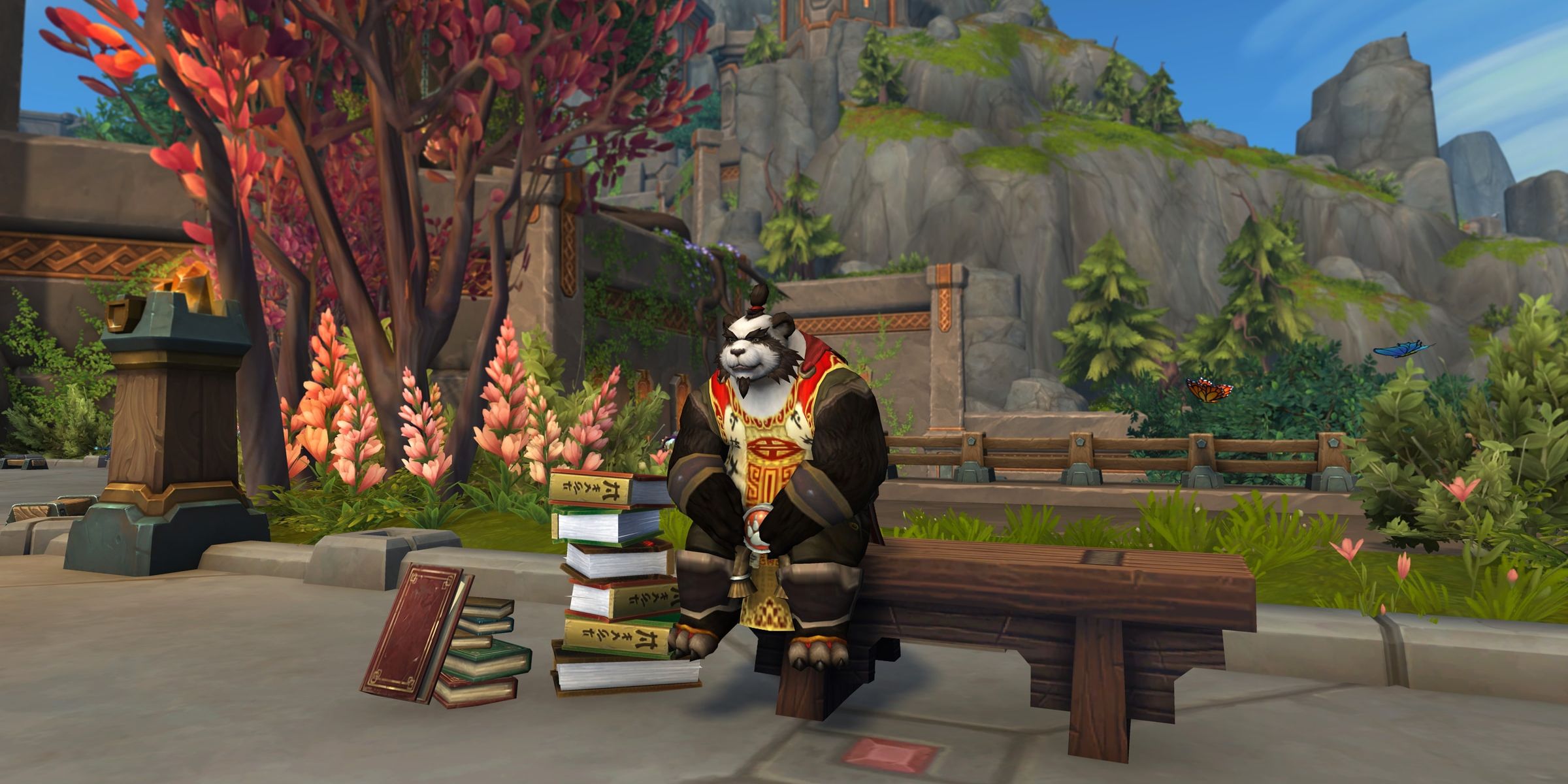
Related
World of Warcraft Reveals Patch Notes for 11.1.7 Content Update
World of Warcraft reveals the full patch notes for the 11.1.7 content update, Legacy of Arathor, ahead of its release date on June 17.
Returning To Un’Goro Eight Years Later
Q: When you released the original Journey to Un’Goro expansion, did you know then you would be returning to Un’Goro? If not, when did that decision get made?
Georgiou: Short answer, no. Very few of us on card design – although there are a couple – were actually on card design when Journey to Un’Goro was being made. But several of us have been players for a very, very long time, and we loved Journey to Un’Goro. I mean, when Journey to Un’Goro came out, Quests were one of the greatest, most exciting things that Hearthstone had ever done. And so, it was always a set that we remember very fondly, and we knew that the players really loved it as well.
Something that we had been discussing for a couple of years amongst the team was the Tortollans, which are a race that was actually made by the Hearthstone team when they made Journey to Un’Goro. I just thought it was so fascinating how they had been adopted into World of Warcraft and made canon. But the Hearthstone team had been the ones to bring them into the world first, and we had told a little bit of their story in the Un’Goro Crater, but we had never really explored what their backstory was – not in Hearthstone, at least.
When we were making Perils in Paradise, we thought maybe for that mini-set, wouldn’t it be kind of fun if we explored the Tortollans’ backstory? Maybe the island that Marin purchased used to be the island home of a Tortollan civilization? But the more we started unwrapping layers there, the more we started talking about it, the more we realized, “Hey, there’s more story here than we wanted to put in a mini set. There’s more than 35 cards’ worth of story.”
When it came time to pitch for Expansion 33, which is The Lost City of Un’Goro – I love adventure stories and exploration, the traditional “Lost City of El Dorado” story. It’s iconic and I thought it would be really fun to do the backstory of the Tortollans as a proper set. What better place to do it than back in Un’Goro Crater, where we met them for the first time – but to peel some layers back from that and say “Oh, everything that you thought you knew the first time? There was a lot more that was happening underneath.”
I don’t know what the intention of the team was at the time, but there was a journal entry that we did as part of marketing that came from these two characters. Their names were Professor Doyle and Eddie Malone, and (the journal) was telling their story as they went through the crater. They run into Elise (Starseeker) and Umbra and all the characters in the set, and they run into all the dangers and dinosaurs.
One of the passages from that journal entry said something along the lines of “Umbra took us to the base of Fire Mountain and said, ‘Look up to see the truth.'” And we were like, what in the world could that possibly mean, other than there’s a city in the volcano in the middle of the Un’Goro Crater?
So I like to think that maybe they had planned for something to be in there all along. I, of course, don’t know that that was the case, but I think it actually worked out pretty beautifully that we were able to say, “Oh, there’s actually a precedent for there being something going on there.” Let’s tell you what’s going on there. Let’s explore that story, and let’s get to tell that story in the Un’Goro Crater with this environment and those dinosaurs and elementals that players love, but let’s put the emphasis and the focus on the Tortollans this time.
Q: Tying in with the focus on the Tortollans, we get Loh, a new Tortollan character introduced in the expansion. What can you tell us about Loh?
Georgiou: Loh is this incredible Tortollan adventurer. He’s been spoken about in World of Warcraft, but he’s never actually been seen. But they say that Tortollan parents tell their children stories of Loh’s great adventures and of his heroism.
And Loh, he’s getting a little bit up there in years. Maybe he’s four or five thousand Tortollan years old. They’re very long-lived. And he’s gone on all these incredible adventures, but he wants to have one more before he retires – before he hangs up his hat and gives up his life of adventuring.
We’re saying that, for a long time, the rumored Lost City of Un’Goro was kind of a fable among the Tortollans, something that has been passed down through generations and generations. A lot of Tortollans just thought it was a story, but Loh was determined to prove that the Lost City does exist. And he thought – what better way to write his last story than to prove the existence of the Lost City, to find it himself, and then to write that story and go off into retirement?
So he reaches out to Elise Starseeker, whom he knew, of course, from the Explorers’ Guild. She’s very famous. He knew that she had gone to the Un’Goro crater the first time. He reaches out to Elise, and Elise is actually who puts him in contact with Niri, who’s a gnome character who is new to this expansion. And then, Umbra, of course, the former leader of the Tortollans in the Un’Goro Crater.
And that’s sort of how their adventure begins. They come together in the crater, and they set off. Of course, we find out later on that Umbra has been hiding some nefarious plans of her own. She’s maybe not as in the dark about the location of the Lost City as she appeared.
You get that classic adventuring and exploration vibe that I think players would expect from Journey to Un’Goro, and we get to tell the story of our characters’ adventures through the crater, finding the city, actually being able to enter the city and meet these Tortollans and find out about what their life in the crater is like through the story of the Quests we have in the set.
So the 11 Quests all have different images that depict different moments in our players’ adventure, all sort of culminating in the betrayal of Spiritsinger Umbra. Finding out that she’s been working with the Cult of the Damned in the Crater, and that she’s actually forcibly trying to take back her position as the chief of the Lost City. And now our heroes must have this big climactic finale where they band together with the Tortollans to try and defeat the evil Cult of the Damned.
It’s quite a jam-packed story. There’s a lot that we’re trying to get across. But it’s been a really fun one to be able to tell.
The Lost City Of Un’Goro Includes Quests, Maps, Stories, And Kindred
Q: When it comes to designing the 11 Quests, how do you keep them unique and connected to the classes, challenging but not impossible to achieve?
Georgiou: So, Edward can speak about this from a game balance position, but I can speak about it from the initial creative development. Quests are hard. I think maybe we went in with a little bit of hubris, honestly, in saying we’re going to do Quests.
Players love Quests. We love Quests. They’re so much fun to play with. We’ve got lots of learnings from Quests and questlines of the past. We knew things that had gone really well, that players really liked. We also knew some things that maybe didn’t work quite as well. So we said, we’ve got all of this information. Surely we can knock this out of the park. This should be great. But we still had a lot more learning ahead of us, you know? Just a lot of iteration throughout the design process.
Players are guaranteed to have the Quest in their opening hand, so a lot of players are playing these on Turn 1, which means they’re very, very likely to complete the Quest throughout the game and get the Quest reward. It needs to feel like you’re appropriately rewarded for building your deck to accomplish this goal, right?
But if players are winning the game in the same exact way very consistently every time, it’s maybe not as fun. There needs to be a little bit of nuance there. They can’t outright win you the game, but they need to push you in that direction so you feel like you’re accomplishing your goal, and that’s a pretty fine line to ride.
I think we did get to a point where we’re very happy with the rewards that we have. Some of them are these moments in time. Some of them, if you build your deck in a very specific way, you can take advantage of and get more value out of them. Some are a little bit less powerful immediately, but they have power that lasts longer. And one of them is, I will say, quite a bit more unique than the others. We have yet to reveal it.
Going in, we just wanted to make sure that fun and gameplay experience were the priority here. Like I said, players are going to see these quests and be playing with these quests every game that they have them in their deck. So it needs to be a good experience.
Then, we made sure that there’s a fair amount of novelty there. We want to guide players in a direction, but we don’t want to say, “These are the 30 cards you need to put in your deck.” We still want there to be some creativity, some options for them to express themselves through their deck building. And rewards that can really tell that story and make them feel rewarded for their gameplay.
We didn’t go with a specific structured style. For instance, in Saviors of Uldum, all the rewards were hero powers. We didn’t go with that. This time, we said we want each of these individual rewards to be what they need to be. And that meant that some of them are minions. A couple of them are even weapons, which is really exciting. One of them is a minion that Deathrattles and gives you a location. So, we’re making sure that they serve their individual specific purpose.
Goodwin: Cora did a great job on that explanation, but there’s one thing that I strongly disagree with her about. She said, “One of these quests looks unique,” and I don’t know what she’s talking about, because I think a lot of them are really unique. (Laughs) I actually don’t know which one she’s referring to.
Georgiou: There are a couple that are a little weird. Good weird.
Goodwin: I’d say quite a few of them. One thing that I’d also mention about this set is that, in a lot of places, we’re trying to pay homage to the old Journey to Un’Goro set. I think it’s one of my favorite sets of all time. That’s true for a lot of people on the team. It’s true for quite a few of our players as well. I think Journey to Un’Goro ranks as one of the most polished, best-designed sets ever in Hearthstone.
As part of that, when we’re talking about learnings that we’re generating from Quests, we’ve been all over the place with Quests. There were the original ones in Journey to Un’Goro, and there were the hero power Quests in Saviors of Uldum. There were the, I would say, slightly maligned questlines from United in Stormwind. We definitely learned a lot from those.
One of the goals with this was, as Cora talked about, you want to pay off powerful rewards to players. I think the goal with a lot of these Quests is not to tell you how to win. It’s like, “Here’s a powerful thing. Now go figure out how to win with it,” rather than “Here is the game plan that you’re going to be doing for every single game, so go do it.” I think that’s true for both the inputs and the outputs. When we break down how we design Quests, there are two really important parts to it. Usually, players see the powerful reward and think that’s the cool part. But I often think that the cool part is what we’re encouraging you to do to get there, right?
If I were to look at questlines for a moment in time and say, “Hey, here’s a learning,” one of the questlines that I think we probably wouldn’t do in the future was the Hunter questline (from Reunited in Stormwind), “Defend the Dwarven District.” It was “Cast damage-dealing spells at enemies.” And what you do with that style of deck is you put a bunch of removal spells in your deck, and you kill your opponent’s stuff. And you don’t really do much of your own game plan until you’ve got your quest reward. It’s not very fun for the opposing player.
Here, we’ve got something like “Spend 18 corpses” (for Death Knight). The gameplay is you’ve got to play a bunch of minions. You’ve got to play a bunch of things that are spending corpses, right? It’s much more back and forth with the other player.
I think the Mage Quest and reward that we just revealed, where you’re discovering cards, to get there every single game, is going to be wildly different because of the cards you’re discovering, right? So, I think there was a lot of really good design sense in the original Journey to Un’Goro rewards and how open-ended they were, that I think we applied really smartly to the Quests here.
Georgiou: Yeah, one of my favorite Quests that we’ve revealed so far is Warrior. It’s “Enter the Lost City.” And the input simply says: “Survive ten turns.” However you choose to do it.
Likely, that will push you into a more control-oriented play style, because you need to remove your opponent’s board. You need to heal to survive ten turns. But there are any number of ways you can build your deck to do it. So, I think it’s interesting to have those kinds of inputs that make players think differently about how they want to approach that task.
Q: There’s so much in The Lost City of Un’Goro – Quests, Maps, Stories, the Kindred keyword, and all that lore. How do you keep it all balanced and make sure you can fit it all in?
Georgiou: Well, the short answer to it is, we have very talented people with lots of creative brainpower. We do this whole process at the beginning of expansions that we call “Blue Skies,” which is where we do mechanic design, and that’s really at the point where anything goes. We’re going to throw every idea against the wall, and we’re going to see what sticks.

I will say, with The Lost City of Un’Goro, since we are referencing Journey to Un’Goro, we had come in with a really strong foundation. We knew we wanted to do Quests. We knew our major mechanic for the set was going to be Quests. So what else did we need to make it so that this set feels robust and full of life and also like its own unique entity, like it’s not just a rehashing of Journey to Un’Goro?
That’s where Kindred comes in, and where Maps and Stories come in. In some cases, they’re referential to Journey to Un’Goro, but also have their own unique new identity to them. Kindred is very reminiscent of the elementals, which were released for the first time in Journey to Un’Goro. But, notably, we opened it up so that it is every minion type and every spell school.
They’re going to play in different ways. Players are going to have to choose – how many of each individual minion type or spell school do I want to have in my deck to ensure that I can get that bonus? We also made the card “Torga,” which draws you a Kindred card and another card that can satisfy the Kindred condition for it. So, you know, if you want to just play a Kindred card and another card in your deck you, in theory, could do that.
We tried to give you a little bit of help there, but if you aren’t strategic about your planning to make sure that you can satisfy that condition, it can be a little difficult to use. But, in testing, we found it also feels really rewarding when you can kind of lay out that game plan and then execute on it.
Goodwin: Like with Quests, one thing that I really like about Kindred is, not only does it tell the story of the setting of Un’Goro, where there are dinosaurs and elementals and all the various creatures and denizens of the land, I think it’s also very open-ended. Like, how you construct your deck, how you play out your turns, encourages a lot of that thinking of “Oh, I have a really good play this turn, but maybe I want to save it to activate Kindred later?”
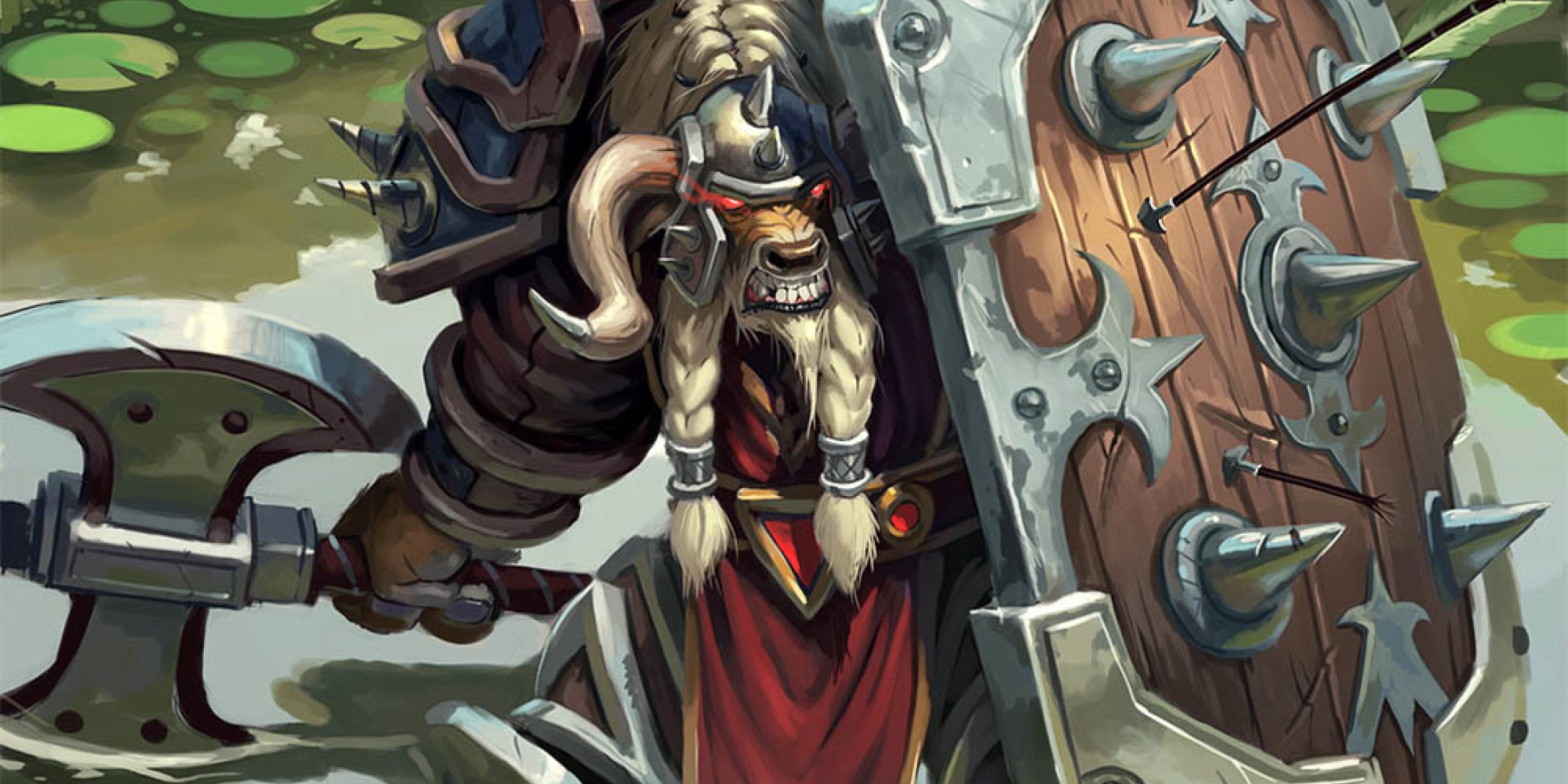
Related
World of Warcraft Has Good News for Tanks
Protection Warriors, Guardian Druids, and other tanks in World of Warcraft: The War Within receive some fantastic news from Blizzard.
Fans Have Responded Positively To Un’Goro’s Dinosaurs And More
Q: One of the things players loved about Journey to Un’Goro was the many dinosaurs that make their home in the crater. Can you tell us about what kinds of dinosaurs we might see in The Lost City of Un’Goro?
Georgiou: Oh, my goodness – every kind of dinosaur that we could possibly give to you. I like to joke that, over the last year, I’ve had the really fun job of just trying to make as many dinosaurs as possible. When we’re going through the art and writing process, we ask, “What are all the dinosaurs that are canonically in the Un’Goro Crater?” And then, “Can we get away with putting some in this set that might not be there? Can we get away with making up a few new dinosaurs?”
You’re going to see lots of dinosaurs that you’ve seen before, but you might also see some dinosaurs that you haven’t seen before in Hearthstone. Like the Platysaur, for instance, which is a very silly little quizzical-looking dinosaur duckbill, and is also a pretty powerful one-drop that we have in neutral for this set. So yeah, you’re going to see Devilsaurs and Brutosaurs and Skyscreamers and all of them. Every dino under the sun.
Q: I love the Story you’ve shown off about Carnassa – her brood of devilsaurs are so adorable and so dangerous at the same time.
Georgiou: You can’t blame dinosaurs for their nature. Dinos be Dino-ing – and you know what? If we’re in their way – that’s our fault.
Goodwin: Yeah, my favorite story about this set is because we’ve already been to Un’Goro, and sometimes, when we do mechanics, we always try to find the twist. Like Kindred being a twist on elementals. Opening up new space. So one thing I talked to the team about was, “Hey, they had big dinosaurs in Journey to Un’Goro. We’ve got to come up with some big dinosaurs.”
The team came back with some stuff, and it wasn’t big enough. We had to come up with even bigger dinosaurs. So there was this hour-long conversation and at the end of it it’s like “Screw it. Ultragigasaur. It’s the biggest, baddest dinosaur we could ever make.” (Laughs) I don’t know what will happen 10 years from now when they go, “Okay, we need to go even bigger with the dinosaurs.”
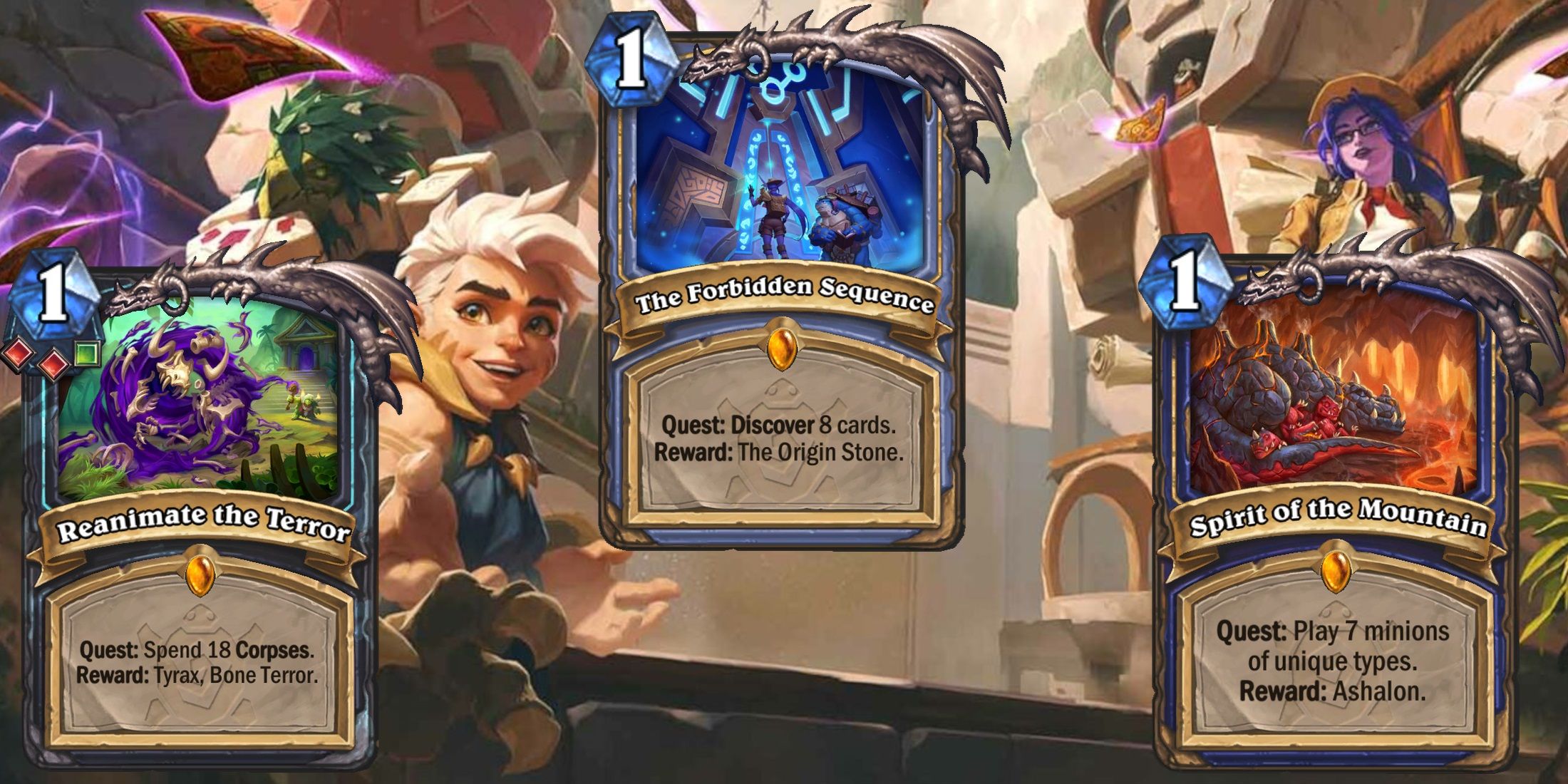
Related
Hearthstone Team On Bringing Back Quests In The Lost City of Un’Goro Expansion
Hearthstone’s The Lost City of Un’Goro expansion features 11 new Legendary Quests, a feature first introduced in 2017’s Journey to Un’Goro.
Georgiou: I do think our most positive reception so far to any revealed card is to Ultragigasaur. 11 mana, 14/28, no text box, literally unplayable unless you have a coin, or you’ve ramped over 10 mana, which we have given you a couple of ways to do. Universally, we love the big dinos.
Q: Overall, what has the fan response been like to The Lost City of Un’Goro and the cards you have revealed so far?
Georgiou: I think they’re so excited. And I think there’s a lot of responsibility that comes with revisiting such a fan-favorite location and environment, because (the players) remember it so fondly. So, on the one hand, they’re so excited to go back and get to potentially relive some of that nostalgia and joy.
But, on the other hand, it’s like – we really can’t mess this up, right? This is pretty big. We want to give them more of what they love and not ruin it for them. So, we hopefully approached it with a very loving touch. Players do seem very excited so far to be able to go back. And, so far, they’re really responding well to the art and the story and the worldbuilding that we’re doing, which is great. It’s always wonderful to see that positive response.
Q: Recently, with the addition of content such as Hearthstone Arena, there have been a lot of newer players getting into Hearthstone. What advice would you give to newer players regarding playing with The Lost City of Un’Goro expansion?
Goodwin: I think, just from a deck-building perspective, Quests are probably going to take a lot of iteration. I’d really encourage you to experiment and explore the different options that you have. Try to figure out a mana curve that you have for your deck.
Make sure that, for example, if you’re doing the “Discover eight cards” Quest, you have enough Discover cards in your deck. We’ve designed these Quests specifically so that you can, pretty consistently, if you’re really trying, get that Quest reward and play with it. So yeah, I would really just look at deck building and experimenting with how that plays out.
The Lost City of Un’Goro Is Hearthstone’s Most Narrative-Rich Expansion To Date
Q: In addition to all the new and returning mechanics, The Lost City of Un’Goro is such a narrative-rich expansion. What was it like blending in all that narrative, and what strategies did you use to do that?
Georgiou: Every designer has a different design process and a different philosophy. I find that there are several of us who actually work really well from a top-down perspective. We have a story, we have a flavor that we’re trying to achieve. How, mechanically, can we reflect that story in gameplay?
From that perspective, it was really important to us to have the story of all our classes be the story of our adventure. The identity of what each individual class is doing. Each individual class in the set does have the theming of what the Tortollans, who are native to the Un’Goro Crater, do to basically protect the sanctity of the Titans’ experiments.
Un’Goro was created as a hotbed for Titan experimentation. And so, in the absence of the Titans, the Watcher Nablya has been tasked with the role of continuing to maintain the sanctity of these experiments. Eonar created the Crater, and Freya was involved, and now Nablya is the Watcher. The Tortollans work with Nablya, and so each class of Tortollans has different jobs and different roles in the Crater.
We made sure, before we went into archetype design, that we knew what each class’s Tortollan job was, and then we were able to reflect that in archetype design. For instance, the Warriors are the sentries and guards of the city. And I think that you can see some of that flavor through some of the cards that we have revealed so far. The Mages, which we just revealed some major cards recently, are the archaeologists and keepers of knowledge – the librarians, the bookkeepers, things like that.
So, we had that foundation of story to guide design, and then also having some really wonderful narrative experts – and, of course, access to the World of Warcraft team and their lore experts who are infinitely knowledgeable. This meant that we had all the right pieces to be able to put together, hopefully, a really cool puzzle.
Goodwin: A good narrative helps a ton with design, as well. It usually gets you to places where you say, “Oh, that’s really exciting. We gotta tell that story.” And, if we do tell that story, this other thing comes to mind as well, right?
But also, there are lots of players playing Hearthstone who might not engage with a story on that level. You might just be playing on your phone on a train while you’re waiting for it to arrive. And, for that group of players, we still need to make sure that, when they come to The Lost City of Un’Goro, they’re having a good time, and they feel immersed in the world.
And there’s a lot of opportunities to do that in the set, especially with Quests. Cora talked earlier about how each of these individual Quests are part of an overall story, but all of those little pieces are still stories in their own right.
Like, in “Reanimate the Terror,” the Death Knight Quest, talking top down – or bottom up – you’re resurrecting this giant undead dinosaur to do your evil bidding. And how do you do it? Oh, you’ve got to spend corpses, obviously. So what’s cool about that is, in the game, naturally, the deck that you’re going to be playing and the strategies that you’re going to pursue feed directly into the story that we’re trying to tell. So I love when we get that chance of the narrative matching the gameplay and making sense, even for players who might not be as in-tune with the overall lore of Hearthstone.
Q: What is your favorite card in The Lost City of Un’Goro?
Georgiou: I will say a card that I’m very, very proud of, that people put a lot of time and effort into, is the Warlock Quest, which we have not revealed yet. That reward took a lot of work and time and effort, and I think it’s really, really cool. So I’m very proud of that one. Also, the Rogue Quest – I love its theming, and, hopefully, it’s one that Rogue players will really like.
Goodwin: I have two answers. I love the Death Knight Quest, just from a gameplay mechanic perspective. And then, as a designer, where I’m thinking about simplicity and elegance and all that kind of stuff, the Hunter Quest we’ve got this time around is a really great one that evokes a lot of that old Un’Goro feeling while still feeling totally fresh and new. So I’m looking forward to when we reveal that one.
Georgiou: I remember when we were playtesting (the Hunter quest), and it just wasn’t quite there. And somebody just made a suggestion at that moment, and we were like, “Aha, that’ll do it.” And when you have those moments, it’s a really satisfying experience. So that one was definitely a team effort, and it’s really wonderful.
(END)
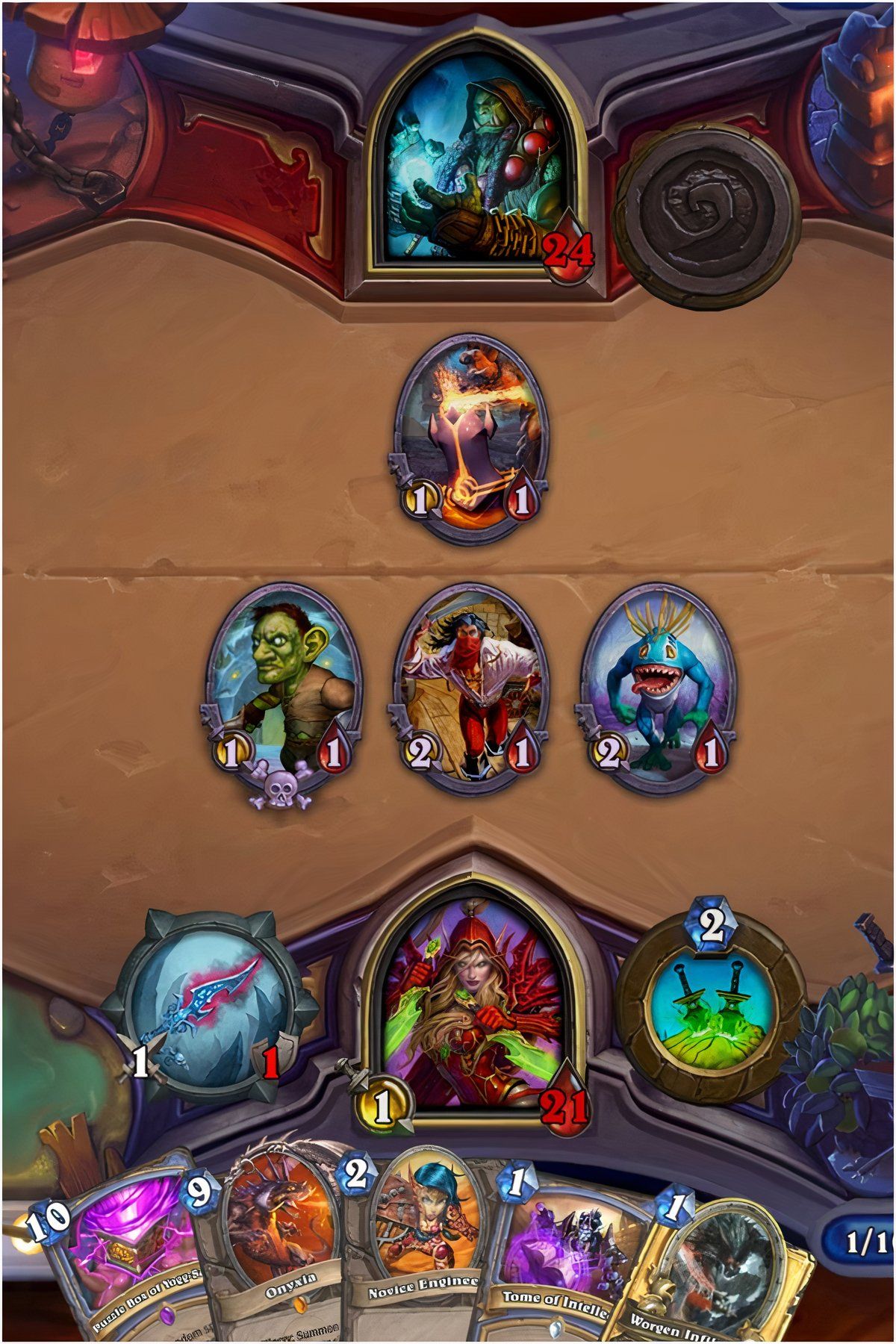
Hearthstone


- Released
-
March 11, 2014
- ESRB
-
T for Teen: Alcohol Reference, Blood, Fantasy Violence, Mild Suggestive Themes
- Engine
-
Unity
